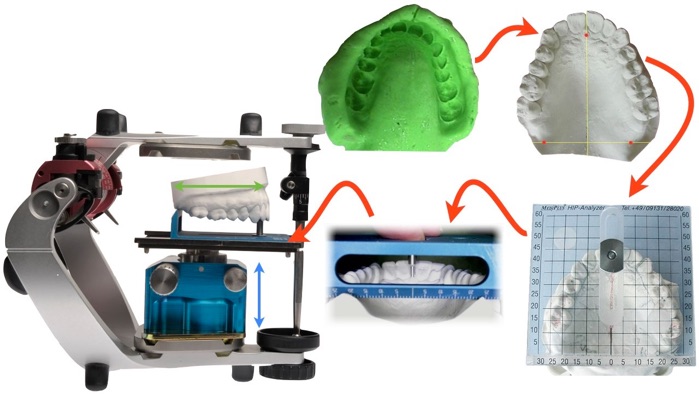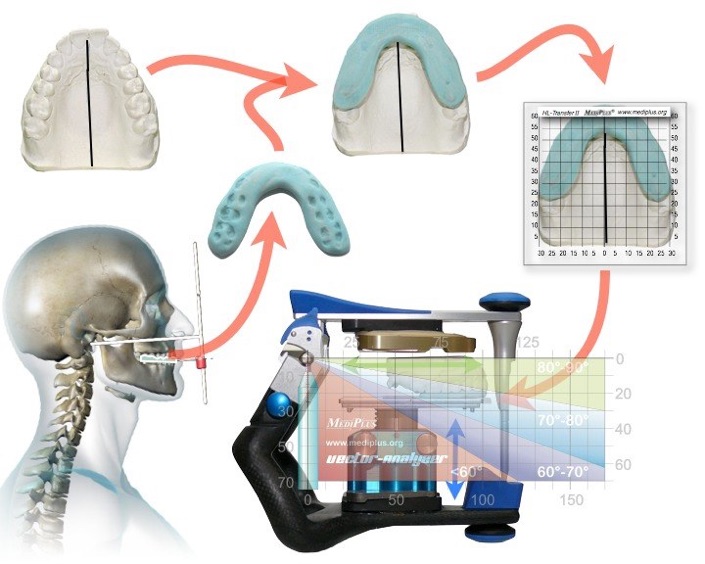Relevant References

Individual Cast Transfer in three Easy Steps
-
1.Securing the horizontal plane of reference: The bite fork of the HeadLines forms the underside of a mounting registration so that it is parallel to the bipupillary Line and to the sagittal plane of reference, for instance the Camper Plane.
-
2.Securing the midsagittal plane: The maxillary suture is traced on the upper dental cast. The dental arch of the cast is inserted into the according indentations of the mounting registration. A special transparent transfer plate is positioned on the plane surface of the registration so that its midline aligns with the maxillary suture of the cast. The transfer plate fits exactly between the rails of the HIP-Mount, centering it (and the dental cast with it) in the articulator.
-
3.Securing the correct vectors of movement: Without regard to some fictive hinge axis the cast is oriented in such a way with regard to the axis of the articulature that the arc of closure will meet the horizontal reference plane at a predetermined angle similar to that produced when the patient brings his teeth together.
It is that easy indeed! The middle of the articulator corresponds to the middle of the face and horizontal/vertical references are reliable. All that is possible even using the least expensive articulator models of the established manufactures. No dream - it’s real!
What you need:
In the Dental Office: HeadLines large/small, depending on size of cranium, silicone putty.
In the Dental Laboratory: Transfer Plate, HIP-Mount, Vector Analyzer
HIP - Mounting in Two Easy Steps
-
1.Cast analysis: Determination of the contact points with the HIP-Attachment which will result in the midsagittal alignment of the maxillary suture in the articulator.
-
2.Securing the correct vectors of movement: Again the cast is oriented in such a way with regard to the axis of the articulature that the arc of closure will meet the horizontal reference plane at a predetermined angle similar to that produced when the patient brings his teeth together.
In this way a closely controlled cast transfer to the articulator is accomplished solely with a dental cast! Again, the middle of the articulator corresponds to the middle of the face and the horizontal/vertical references are largely reliable. All that in a jiffy!
What you need:
In the Dental Office: No special instruments are needed. The maxillary impression must accurately depict the reference areas: The maxillary suture, the incisal papilla and the hamular notches behind the maxillary tuberosities. The use of molded impression trays is recommended.
In the Dental Laboratory: HIP-Analyzer, HIP-Mount, Vector Analyzer



